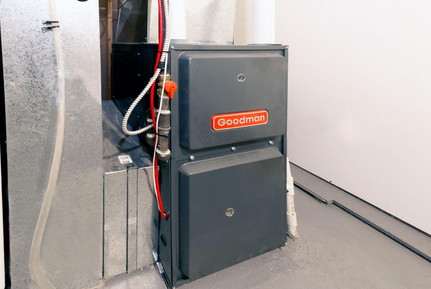DIY Furnace Troubleshooting Tips for Homeowners

When your furnace isn’t working as it should, it can be stressful, especially in the colder months. Before calling a professional, you can try some basic troubleshooting steps to identify and possibly fix the issue. Here are some simple DIY tips for homeowners to keep your furnace running smoothly.
1. Check the Thermostat
Sometimes, the problem isn’t with the furnace but the thermostat. Make sure your thermostat is set to “Heat” and the temperature is set higher than the current room temperature. If it’s battery-operated, replace the batteries. Ensure the thermostat is clean and free of dust, as this can affect its performance.
2. Inspect the Power Source
A furnace that won’t turn on may not be receiving power. Check your circuit breaker or fuse box to see if a switch has tripped or a fuse has blown. Reset the breaker or replace the fuse if needed. Also, ensure that the furnace’s power switch, often located nearby, is turned on.
3. Change the Air Filter
A clogged or dirty air filter can cause your furnace to stop working properly or shut down entirely. Check the filter, usually located near the return air duct or the blower compartment, and replace it if it’s dirty. A clean filter not only improves airflow but also helps your furnace run more efficiently.
4. Check the Pilot Light or Ignition System
If you have an older furnace with a pilot light, make sure it’s lit. If it’s out, follow the manufacturer’s instructions to relight it safely. For newer furnaces with electronic ignition systems, check for any error codes displayed on the control panel and consult the manual for guidance.
5. Ensure the Gas Supply is On
If your furnace runs on natural gas, check that the gas valve is open. The valve is usually located near the furnace and should be in line with the gas pipe when open. If you smell gas or suspect a leak, turn off the gas supply immediately and call a professional.
6. Inspect the Furnace Blower
If your furnace turns on but doesn’t blow warm air, the blower motor might be the issue. Check for any debris blocking the blower and clean it if necessary. Also, ensure the motor belt is in good condition and properly aligned. If the belt looks worn, it may need to be replaced.
7. Look for Obstructions in Vents
Blocked or closed vents can reduce airflow and cause your furnace to overheat or work inefficiently. Walk around your home and make sure all vents are open and unobstructed by furniture or other items.
8. Reset the Furnace
Sometimes, a simple reset can solve the problem. Turn off the furnace, wait a few minutes, and then turn it back on. If your furnace has a reset button, press it once to restart the system.
Conclusion
These DIY troubleshooting tips can help you identify and do furnace repair in Austin. However, if you’ve tried these steps and your furnace still isn’t working, it’s time to call a professional. Regular maintenance and timely repairs are key to keeping your furnace running efficiently and your home warm during the colder months.